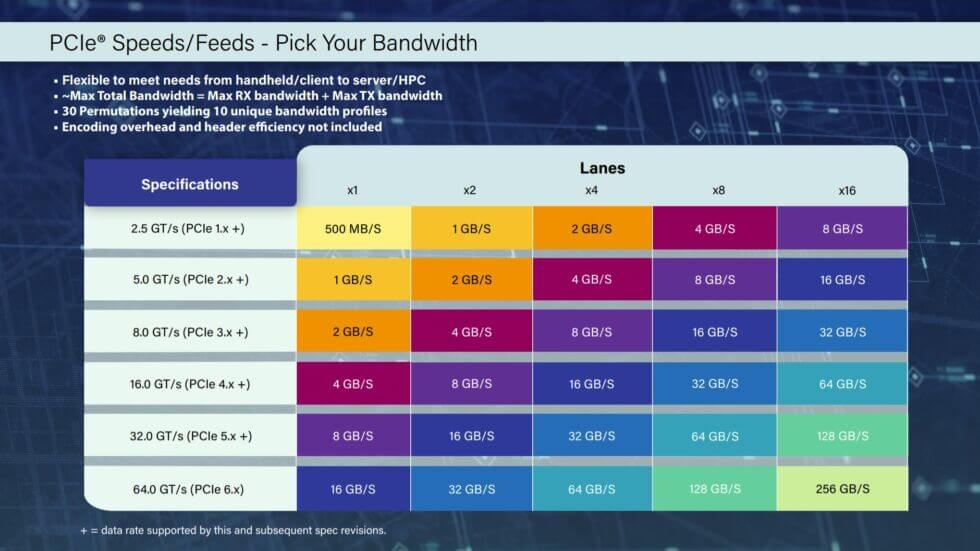The PCI Special Interest Group has finalised the PCI 6.0 specifications, which will offer backwards compatibility but what does this mean for me? Read on as I explain what PCIe is and what it means for your computer.
History
There has always been a need to expand a computer, and in the 1980s a lot of home computers had expansion ports where different add-ons could be connected.
IBM released their first generation desktop computer, called the PC. It had expansion slots inside that they called “Industry Standard Architecture” (ISA.) This started a craze for companies to clone the IBM PC and sell it at a lower price.
IBM then released their PC/AT, their second generation desktop computer which had 16-bit expansion slots instead of 8-bit. The clone PC manufacturers followed suit.
Personal System 2
IBM released their third generation desktop computer with some big changes. They made the keyboard and mouse connector the same shape and introduced a 32-bit expansion slot called the Micro Channel Architecture from their mainframe computers.
Nine of the largest clone computer manufacturers decided to use a different approach and used the Extended ISA (EISA) and then Intel released the Peripheral Component Interconnect (PCI) connector and all the clone manufacturers followed suit.
PCI to PCIe
PCI came out in 1992, which supported 32-bit although there was a 64-bit version. This connector used a lot of pins to communicate between the card and the motherboard but there was a limit to the communication speed that all these tracks could do before there would be problems with cross communication.
A breakthrough in dealing with interference was to provide differential “lanes” where one side of the pair has positive voltage, the second side has negative, and vice versa which cancels out the interference.
So by 2003, the PCI Special Interest Group released their PCIe or PCI Express standard.
PCIe x1, x2, x4, x8, x16
The x defines how many lanes that are available, so x1 has a single serial lane and x16 having 16 lanes.
PCIe has a backwards compatible system so that cards that need less lanes can be plugged into slots with more lanes, and equally (providing the slot is open at the end, some are closed) a card that supports more lanes can be plugged into a slot with fewer lanes and will only use the provided lanes.
There are some exceptions, where the card needs more lanes and therefore won’t work in a smaller slot, for example a SAS controller card is x8 and must be plugged into an x8 or x16 slot and won’t work in a x4 slot even if it fits.
PCIe 1.0, 2.0, 3.0 etc.
Every revision of the PCIe standard effectively doubles the bandwidth over each lane. However, PCIe is backwards compatible so if a card of a different version is plugged into a PCIe slot, that slot runs at the speed of the slowest device, be that the motherboard or the card.
Support for PCIe versions are as follows:
- PCIe 3.0 – Support has been available in 3rd generation Intel processors (2013) and in AMD AM4 processors (from 2020)
- PCIe 4.0 – Support was first added with AMD 3000 series and then 11th generation Intel processors (2021)
- PCIe 5.0 – Support was added to 12th generation Intel processors (2022) and AMD AM5 processors.


